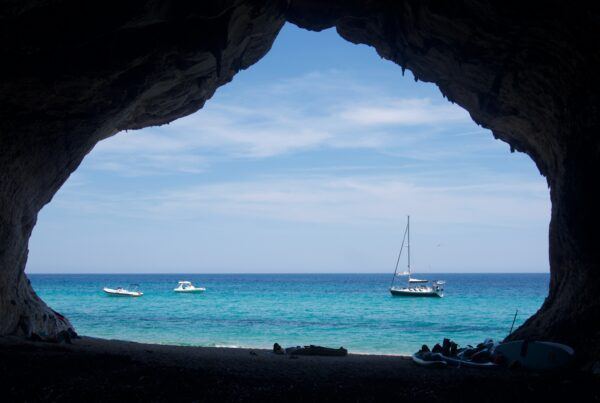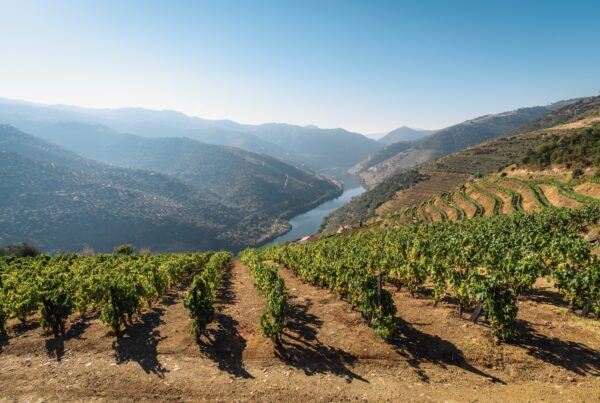Davide Cassani might be the most famous Italian cyclist you’ve never heard of. In his homeland, he was well-loved as a gregario to some of the best riders of the 1980s and 90s, and as a stalwart of Alfredo Martini’s great Italian national teams at the Worlds. A native of Faenza in the province of Ravenna, in his pomp he could be seen alongside the likes of Claudio Chiappucci, Roberto Visentini and Stephen Roche at Carrera Jeans and Moreno Argentin at Ariostea.
He was never a prolific winner, but he enjoyed some success at several one-day races such as the Giro dell’Emilia and Milano-Torino, as well as stage wins at the Giro D’Italia and podiums at La Flèche Wallonne, the Amstel Gold Race and the Giro di Lombardia.
After 14 seasons in the pro peloton he retired in 1996 – a decision forced on him by a car accident while he contracted to Saeco – he became a successful commentator for RAI, Italy’s national broadcaster, and it’s more than likely there, that many of Italy’s young generation came to know him as an insightful and eloquent interpreter of the bicycle race. More than a few viewers will have been sad to see him go when in January 2014, he replaced Paolo Bettini as the manager of the Italian national cycling team, continuing a love affair with the Nazionale that has been a hallmark of his career.
But we’ll come to that later. When asked to recount his career, Cassani starts almost 30 years before, in 1985.
“I remember one stage in the south,” says the youthful looking 54-year-old over a cup of tea in Corvara, northern Italy. “The heat was asphyxiating. At a certain point, I knew I couldn’t do any more. My room mate, Daniele Cavoli, saw that I couldn’t go on, he was in bad shape too, so he retired as well. When we got back to our hotel, the room was already empty. Bruno Reverberi [the Termolan-Galli team manager] was furious. He said: ‘You retired, so the mechanic will bring you to the station. Get the first train you can. Goodbye.’ With my luggage and my bike I got on a train at nine that evening and didn’t get home to Faenza until the next afternoon. And that was the end of my first Tour de France.”
You get the feeling that it isn’t the first time he’s been asked to recall his time as a professional. And maybe there’s a pinch of media training in the smooth delivery, but there’s no denying the veracity of the beaming smile whenever he comes to another happy memory. Cassani is a man who’s dedicated his life to a sport he loves, spent his entire adult life surrounded by it, and still keeps in enviable shape so as to better enjoy it. You can’t but admire that.
“I always trained hard. I was careful eating, and I was going strong when I was called for my first Worlds [the previous year, 1984, Cassani had been first reserve] in Italy, at Giavera del Montello. That was a great satisfaction. I was put sharing a room with Francesco Moser. I was born in 1961, he in ’51, so it was another generation, and it was maybe awe-inspiring, too.
“Anyway, I had this problem. Giuseppe, my father, was a truck driver, he died two years ago. The only accident he ever had in his life was with me in the truck. In the summer, I used to like to go with him because I liked being out at night, sleeping in the truck. After the accident, however, I started to have nightmares. I’d scream in the middle of the night. So I was thinking, God, what happens if I start screaming with this guy!
“Now I don’t do it so much, but in those years it was quite frequent. The nightmare was that the ceiling was falling down, it was a bit of claustrophobia, and I’d start shouting, “help me mamma, help me”. Fortunately, nothing happened with Moser! But, at the Worlds in 1993 I shared a room with another Trentino, Maurizio Fondriest, and the nightmares came. But this time, the nightmare wasn’t that the ceiling was falling on me, but on him. So I pushed him from the bed. Perhaps that Worlds didn’t go so well because of me – but at least I saved his life!”
Listening to him talk, you begin to appreciate his role in what was a golden age for Italian cycling. He wasn’t the star, but every leading man needs a strong supporting cast and at the time, Cassani was as reliable as they came. It was exactly the kind of experience and education that makes him perfectly suited to commentating – and to managing today’s crop of Azzurri. He’s seen it all, understands racing like few others, but hasn’t been distracted by the trappings of fame or huge success. He knows his role, and is happy to leave centre stage to others.
“In 1986, I changed squads to Carrera. That was a great team because we had Roche, Visentini, Bontempi, Leali, Ghirotto, Perini, a young Chiappucci, Maechler who won Milano-Sanremo, Zimmermann. I spent two years with that team. We won the Giro with Visentini in ’86 and we had a particularly good year – also a little difficult, if you remember the famous stage [and the battle between Visentini and Roche] – in ’87. Visentini had the maglia rosa, and Roche, who second in the classification, followed Ennio Salvador when he attacked on a descent on the stage to Sappada. It looked like Roche had attacked to take the maglia, so the order arrived to push to bring them back. Visentini was really nervous. We started to pick up the pace, but once Roche realised that his own team was working to pull him in, he started to push even harder too. You can imagine what the journalists thought.
“The only one who didn’t pull was the Belgian Eddy Schepers, who was Roche’s room mate. Now you can understand what a nice team we had [laughs]. We managed to catch Roche on the final climb, but then Visentini had a crisis and Roche was able to take six seconds and the maglia rosa. I was sharing with Visentini and when we were back at the hotel he was furious … but I just looked forward.”
The Sappada Affair still divides opinion. In Italy, the popular interpretation is that Stephen Roche screwed fan-favourite Roberto Visentini out of a maglia rosa. Elsewhere, it’s seen as a double-crossing opportunist getting served his just desserts by an isolated teammate who felt his whole squad had turned against him.
Carrera went into the race without a designated leader – support was officially promised to the strongest rider in the race – but the direttore sportivo Davide Boifava had other ideas. Roche was told to ride for Visentini in Italy and later in the summer the Italian would repay the favour at the Tour de France. It was a promise that even Boifava must have found hard to believe. At that stage the pair were locked in a long-term bitter dispute and rumour was that Visentini had already booked his summer holiday – for July. Visentini was the defending champion and felt that he deserved Roche’s support. The Irishman felt differently, so he went rogue and the rest is history.
It’s often painted as black and white – Roche or Visentini – but the truth of it all is probably a few shades of grey. Sports fans love a rivalry and nothing drives a plot like some friction, and in the excitement of a story like that it’s easy to forget that in between the protagonists there’s usually a few innocent bystanders getting helplessly knocked around.
“For us gregari it was important to win the Giro – a little for the honour, but also for the pocket [laughs] – and there we were, from having first and second to risking losing it all. [In the end] Roche won the Giro, and then we went to the Tour. It departed from Berlin, the wall was still there, and it was a very hard Tour, also a very long one. Three and a half weeks that were truly difficult. But it turned out to be a beautiful victory, arriving in Paris with a teammate in yellow, doing the passerella, the catwalk, on the Champs-Élysées. It was a great satisfaction. Seeing the Eiffel Tower brings to mind all of the suffering from the previous three and a half weeks.
“In 1987, I also won my first race, in Conegliano [a town in Veneto that hosted the Gran Premio Sanson]. That was after nearly six years as a pro. I was 26.
“From 1988 on I rode for Moreno Argentin at Gewiss, and at that stage I became a fixture of Alfredo Martini’s national team. We were really strong that year; there was Saronni at his last Worlds, Bontempi, Bugno, Argentin and there was this kid, Fondriest, who was only 23.”
The “Kid” ended up taking one of the most dramatic wins the Worlds has seen. Fondriest was highly-regarded as a rider, but only in his second year as a pro. He worked his way into a break and then shadowed Belgian champion Claude Criquielion – who had already won a rainbow jersey, La Flèche Wallonne and the Ronde Van Vlaanderen – for the final kilometres of high drama as the Canadian sprinter Steve Bauer reeled them in before sensationally crashing Criquielion and losing out to a late, Machiavellian pounce from Fondriest.
“A lap and a half from the finish, Claude Criquielion attacked and I went with him. There were four of us. I was a gregario, and thinking to myself, ‘now? What can I do here?’ Fortunately, another 10 riders joined the group, including Fondriest and also a lot of French riders like Laurent Fignon. Criquielion went again, and I was just behind him but obviously I didn’t have the strength in my legs to go with him, but Maurizio Fondriest did so they went off in two.
“Then, with four kilometres to go a Canadian attacked: Steve Bauer. At that point, I couldn’t do any more and I thought that even if he got away, we’d retake him in the final kilometre, that he couldn’t be dangerous. But Bauer was able to catch the two up front and at the end, what happened? Bauer sprinted, closed Criquielion off and made him crash and Fondriest came from behind and won the World Championship. I arrived seventh.
“In 1990, I changed to Ariostea with Giancarlo Ferretti. They were four important years – I did a lot of important events, always at the Worlds, I won some races. The most beautiful was probably the ’90 Giro dell’Emilia [his home race]. That day I was motivated because my son Stefano turned one and for the first time he came to see me race. He doesn’t remember, of course, but I have the photo. I won it again in ’91 and in ’95 – my last victory.
“That year, the Worlds were in Colombia. The team departed the same day as the Giro dell’Emilia. I had a good relationship with Alfredo Martini, so a few days before I called him and said: ‘Listen, Alfredo, it’s the Giro dell’Emilia the same day we leave for Colombia. I’ll make you a proposal: My teammates, Rolf Sørensen and the other foreigners, leave for the Worlds the day after. What do you say about letting me do the Giro dell’Emilia, win the Giro dell’Emilia and then I’ll come to Colombia? [laughs] I also knew that because the others from the Nazionale were leaving that day, there wouldn’t be so many to beat!”
To be the Commissario tecnico of the Italian national team is – unsurprisingly to anyone who knows their cycling history – no small thing. Since Alfredo Binda took the reins in 1950, there have been just 11 CT in total and there probably would have been fewer had Franco Ballerini’s life not been cut tragically short by a motor racing accident in 2010.
Paolo Bettini was lured away from the post at the end of 2013 by F1 star Fernando Alonso’s ill-fated attempt to start his own World Tour team, and while the two-time World Champion is now out of work, his loss has been Cassani’s gain.
“For me, the Italian jersey has always represented something special. For me, they were always the most beautiful races, the most important, emotional. When they gave me the maglia azzurra, I’d look at myself in the mirror and think ‘Wow, you’re great!’ because I’m not a champion, I was never a champion.
“I always wanted to be Commissario tecnico. And I became the CT on a strange day. Like I said, my father was a truck driver and his name on the CB radio was ‘Davide Azzurro’, because also for him the worlds had a special flavour. And my grandfather was a big fan of Giuseppe Minardi. He was always lively, a great person. When he died, my grandmother gave me 1,000 Lire because she said that money from the deceased brings you good fortune. I put it in my wallet, and I still have that 1000 Lire here 40 years later. I’ve always believed it brought me good luck.
“Then, on the 29 December 2013, I was at home organising some things and I while I was looking for something, I found my dad’s old wallet. It was in crocodile, it had been a gift from my mum and inside she’d written 4.1.54, because he was born on 4 January. Inside, I found 500 Lire, a silver coin. I put it in my pocket thinking that it would bring me good luck and a half hour later the president of the Federazione Ciclistica Italiana called me to ask if I’d like to become the Commissario tecnico. I told him I’d think about it and that we’d speak in the coming days, but the next week Alfredo Martini died [delaying the announcement]. So, I became the Commissario tecnico officially on 4 January, 2014, my father’s birthday.”
–
In collaboration with Hotel La Perla, inGamba is offering an exclusive chance to ride with Davide Cassani this summer, September 3 – 6, just weeks before he leads Italy’s top riders to the World Championships in Richmond, Virginia. This package includes a Pinarello Dogma F8 equipped with Shimano Dura-Ace Di2 and Zipp wheels, a full Giordana kit, the full support from our team of professional mechanics and soigneurs. For more, click here.
This article originally appeared in Peloton Magazine and features here courtesy of the author, Colin O’Brien.

















